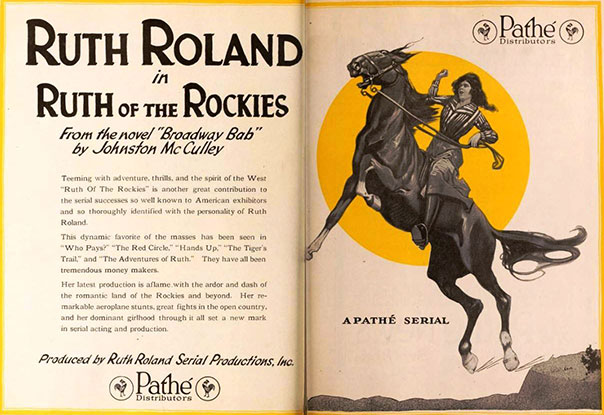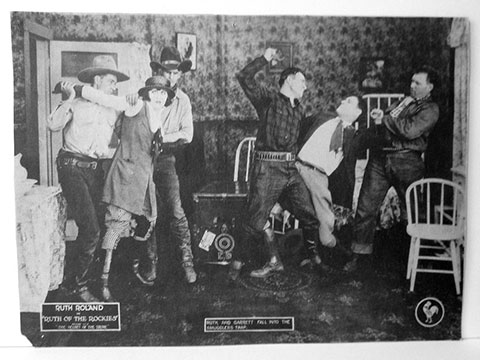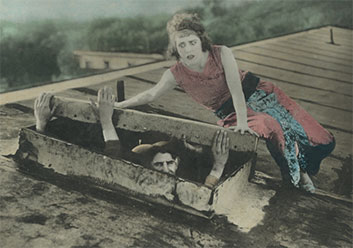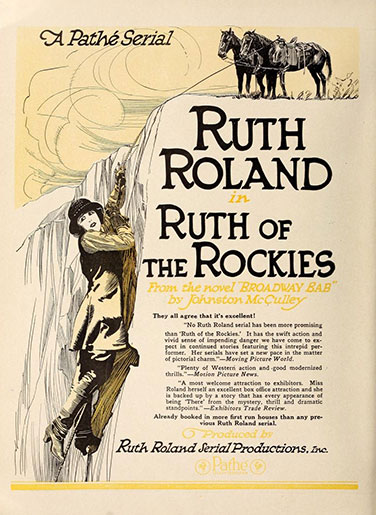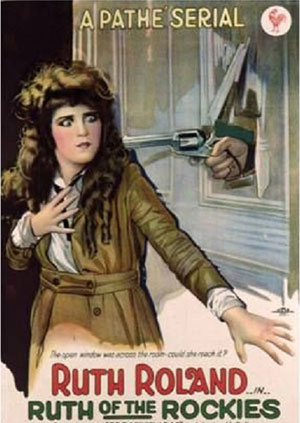R …is for
Ruth of the Rockies
Promotional advertisements for Ruth of the Rockies praised Roland’s “remarkable aeroplane stunts, her great fights in the open country, and her dominant girlhood,” all of which were said to set a new mark in serial acting and production. Proclaiming the serial to be “The Greatest Story of the West,” those ads emphasized Ruth’s heroism as she is “Plucked from the roof of a speeding train. Carried thousands of feet into the air on a rope. Dropped by her aeroplane into a lake. Surrounded by enemies in the wilderness. Saved by sliding down the walls of a canyon. Pursued in her daring leap for life.” And indeed, like many serial heroines, Roland—who, according to the posters, “fights like a bearcat and rides like a cyclone”—performed most of her own stunts, which endeared her even more to her fans.
Survival Status: According to Progressive Silent Film List, two episodes of the serial—fourteen and fifteen—survive, likely in fragmentary form, in the UCLA Film and Television Archive. A minute-long clip of the “death-trap” scene can be viewed at https://www.youtube.com/watch?v=Mx7rrdnXfiE.
Director: George Marshall
Release Date: August 29, 1920
Release Company: Ruth Roland Serial Productions, distributed by Pathé Exchange
Cast: Ruth Roland (Bab Murphy), Herbert Heyes (Justin Garret), Thomas G. Lingham (Edward Dugan), Jack Rollens (Sam Wilkes), Fred Burns (Burton), William Gillis (Pendleton Pete), Gilbert “Pee Wee” Holmes (Shorty), Norma Bichole, Harry Maynard, S. J. Bingham, Al Hoxie (stunts).
Episodes: (two reels each) 1. The Mysterious Trunk. 2. The Inner Circle. 3. The Tower of Danger. 4. Between Two Fires. 5. Double Crossed. 6. The Eagle’s Nest. 7. Troubled Waters. 8. Danger Trails. 9. The Perilous Path. 10. Outlawed. 11. The Fatal Diamond. 12. The Secret Order. 13. The Surprise Attack. 14. The Secret of Regina Island. 15. The Hidden Treasure.

